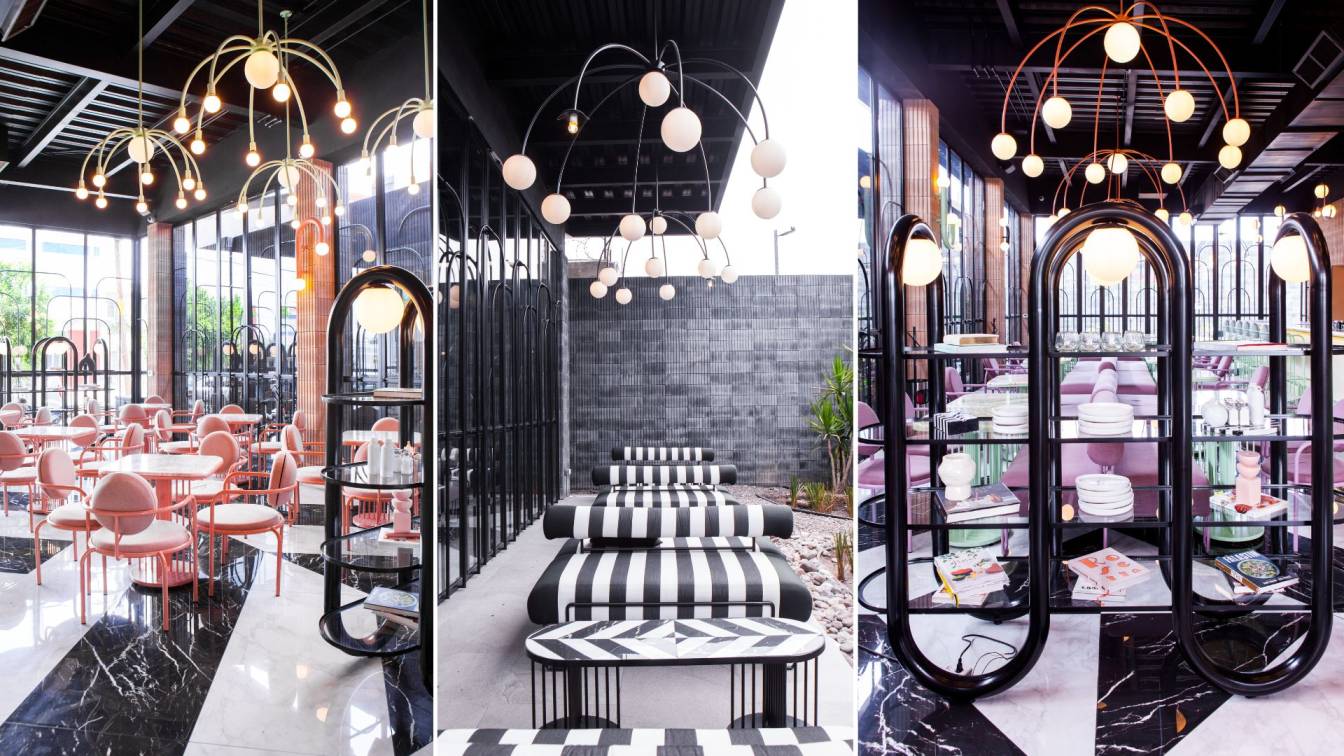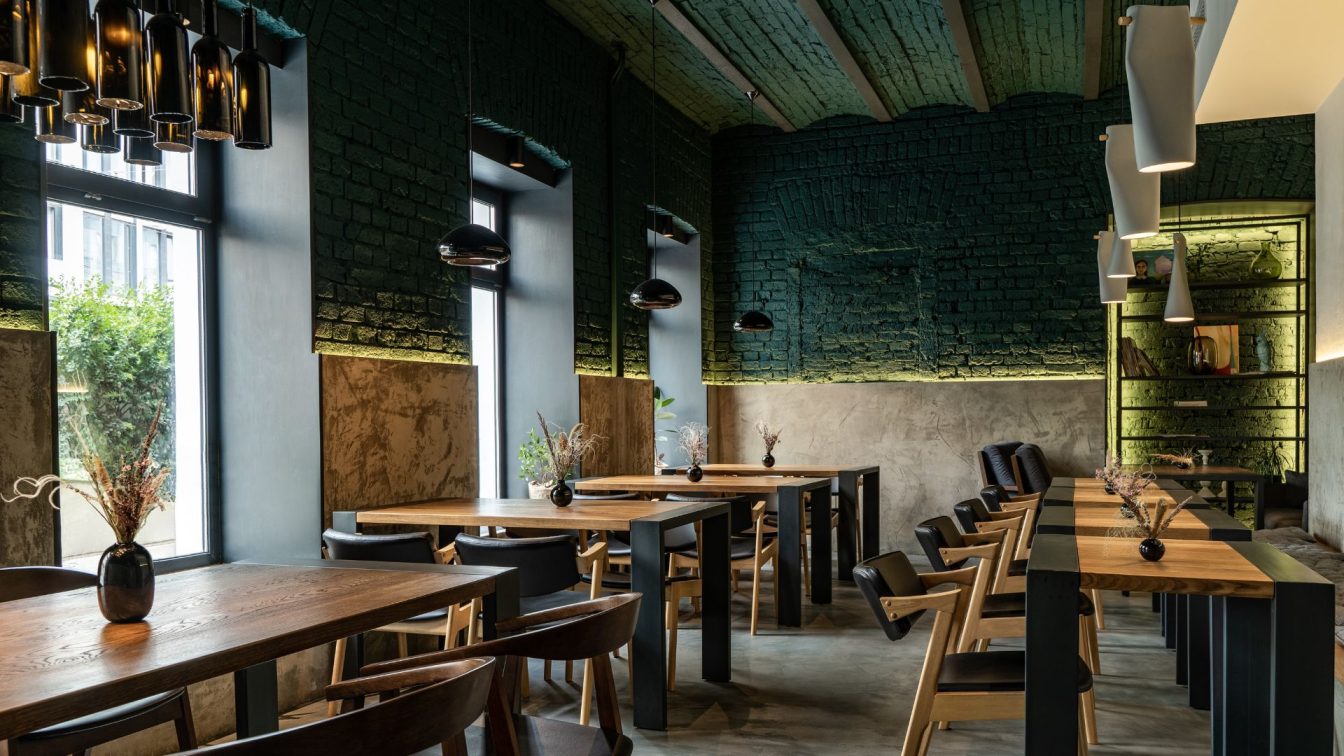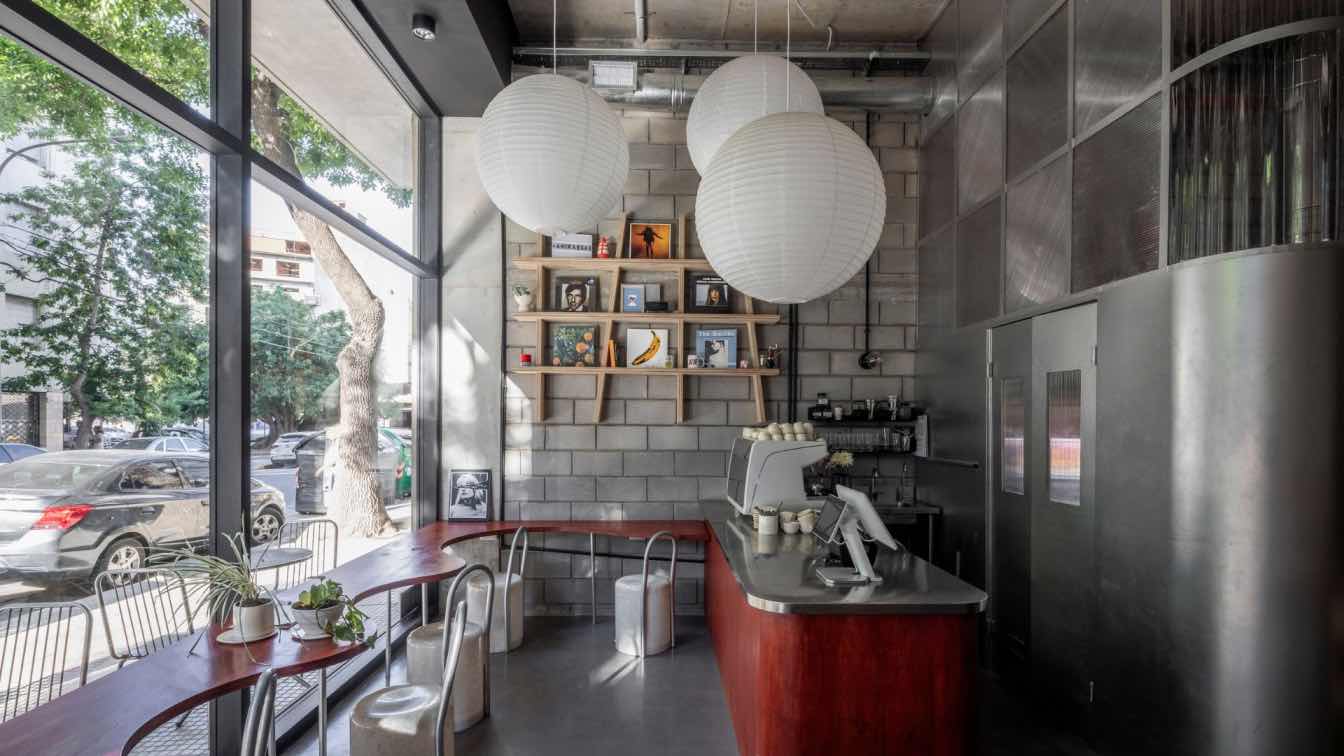An unprecedented fusion between Lebanese cuisine and retro nineties design form the dynamic essence of the most recent integrated design project by Andrés Mier y Terán and Regina Galvanduque.
The multi-sensorial abstraction of Lebanese gastronomy is just part of the inspiration behind MYT+GLVDK’s new architecture, furniture, merchandising, and visual identity project for Filo, a restaurant with a culinary offering that brings together the traditions of the Middle East with an unexpected Mexican twist.
For Filo located in Torreón, Mexico, the architects Andrés Mier y Terán and Regina Galvanduque developed an integrated concept that emerges out of the idea of a fusion between the known and the unknown. The result is a novel space that evokes the textures and colors of the fundamental ingredients of Lebanese recipes such as filo pastry, which gives its name to the restaurant and the hues found in olive oil, pistachios, rosewater of Damascus, figs, sumac, and pepper, the latter as part of baharat or seven spice blend.
This project, promoted by a group of Mexican women entrepreneurs of Lebanese descent, emerged as a homage to the fundamental dishes, such as mezze, enjoyed in the warmth of the home and which are a part of the heritage handed down by generations of women in the kitchens, through the preparation of hummus, falafel, kippe, musakhan and tabbouleh, to mention only a few.

The 210-square-meter space takes design tendencies from the early nineties as its reference point, above all the influence of the Memphis style founded by Ettore Sottsass, while incorporating geometric patterns from the tiles and screens so characteristic of the Middle East.
The interior design at Filo is defined by striking elements that shape the ambiance of the dining room and terrace. A large onyx bar, visible from the entrance, is the central feature in the interior space, with the café and take out area to one side, selling preserves, jams, aperitifs, organic wines, craft beer, bakery goods, and Arabic sweets. The bar continues into the other half, delimited by a series of green palms providing privacy to the dining tables and bar.
The open kitchen is a central part of the experience, allowing diners to observe the preparation of dishes and appreciate the traditional processes employed, drawing on family tradition. The fusion recipes give rise to original dishes, such as pitaquiles chilaquiles made with pitta bread or tabbouleh made with avocado, almond, and pine nuts. The rear of the dining room opens onto the terrace, designed to avail of the warm climate in the city, while fostering a convivial atmosphere at aperitif hour with an extensive cocktail list.

To create a unique atmosphere, a color palette was selected with soft hues that contrast with the patterns of the concrete textures in green, pink, and black; the marble and onyx surfaces; and the wood and textile details, which introduce some of the codes typically found in vernacular Mediterranean architecture.
Filo pastry such a fundamental component of savory snacks and Lebanese sweets inspired the forms of the lamps and the furnishings, which offer functionality and comfort with their subtle curves. The finishes in electropainted metal and fabrics in pastel shades emphasize the particular style, which evokes the delicacies of a confectionery store.
For the visual identity, MYT+GLVDK designed a playful image with a personalized typography in which each letter has an original shape and which, when combined, generate different patterns. This interplay of visual elements produces compositions that reflect the key concept of fusion that is omnipresent in Filo, with the harmony of traditions and flavors being an essential part of its signature style. Filo, a project founded by women, offers a new chapter and a dynamic experience of Lebanese cuisine.























ABOUT MYT+GLVDK
MYT+GLVDK, a Mexican multidisciplinary firm with a global vision, is the result of the collaboration between Andrés Mier y Terán and Regina Galvanduque. The studio offers innovative, functional, and attractive solutions of refined aesthetics based on well-defined concepts that are reflected in memorable products and experiences.
Through a 360o work methodology that incorporates three essential pillars – Architecture, Industrial Design, and Branding – MYT+GLVDK conceives a specific narrative for each client, allowing them to tell their own story.
With remarkable experience in the hospitality, retail, and residential fields, as well as exhibits and cultural institutions, MYT+GLVDK’s projects are defined by the convergence between tradition and avant-gard, combining quality, practicality, and sophistication.





